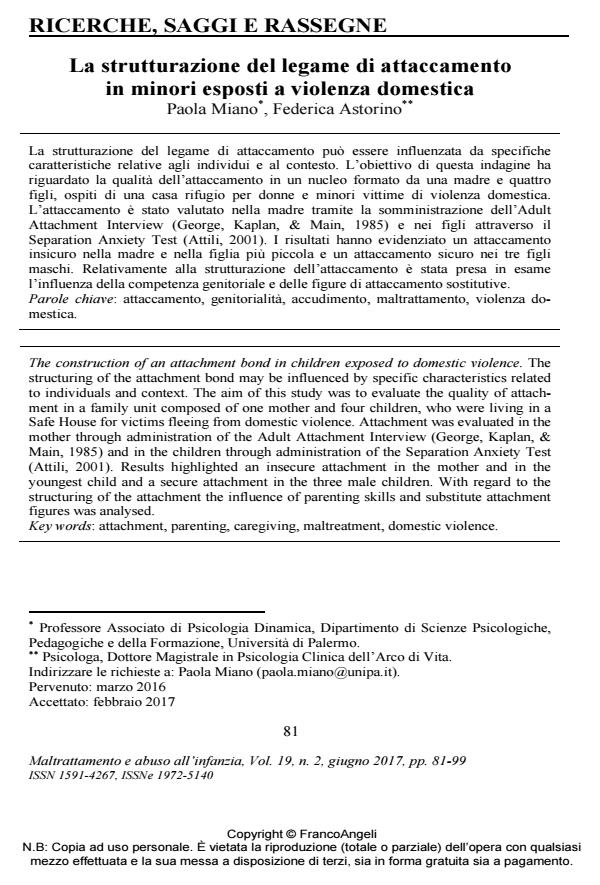The construction of an attachment bond in children exposed to domestic violence
Journal title MALTRATTAMENTO E ABUSO ALL’INFANZIA
Author/s Paola Miano, Federica Astorino
Publishing Year 2017 Issue 2017/2
Language Italian Pages 19 P. 81-99 File size 212 KB
DOI 10.3280/MAL2017-002005
DOI is like a bar code for intellectual property: to have more infomation
click here
Below, you can see the article first page
If you want to buy this article in PDF format, you can do it, following the instructions to buy download credits

FrancoAngeli is member of Publishers International Linking Association, Inc (PILA), a not-for-profit association which run the CrossRef service enabling links to and from online scholarly content.
The construction of an attachment bond in children exposed to domestic violence. The structuring of the attachment bond may be influenced by specific characteristics related to individuals and context. The aim of this study was to evaluate the quality of attachment in a family unit composed of one mother and four children, who were living in a Safe House for victims fleeing from domestic violence. Attachment was evaluated in the mother through administration of the Adult Attachment Interview (George, Kaplan, & Main, 1985) and in the children through administration of the Separation Anxiety Test (Attili, 2001). Results highlighted an insecure attachment in the mother and in the youngest child and a secure attachment in the three male children. With regard to the structuring of the attachment the influence of parenting skills and substitute attachment figures was analysed.
Keywords: Attachment, parenting, caregiving, maltreatment, domestic violence.
Paola Miano, Federica Astorino, La strutturazione del legame di attaccamento in minori esposti a violenza domestica in "MALTRATTAMENTO E ABUSO ALL’INFANZIA" 2/2017, pp 81-99, DOI: 10.3280/MAL2017-002005